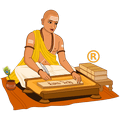























Sunrise05:35
Sunset19:18
MoonriseNo Moonrise
Moonset18:03
Shaka Samvat-2156 Chitrabhanu
Vikram Samvat-2021 Plavanga
Gujarati Samvat-2022 Vijaya
Amanta MonthJyeshtha
Purnimanta MonthAshadha
WeekdayShukrawara
PakshaKrishna Paksha
TithiChaturdashi upto 19:47
YogaShula upto 11:31
KaranaVishti upto 08:24
KaranaShakuni upto 19:47
Pravishte/Gate10
Rahu Kalam10:44 to 12:26
Gulikai Kalam07:18 to 09:01
Yamaganda15:52 to 17:35
Abhijit11:59 to 12:54
Dur Muhurtam08:20 to 09:14
Dur Muhurtam12:54 to 13:49
Amrit Kalam11:01 to 12:37
Amrit Kalam28:54+ to 06:27 on Apr 29
Varjyam06:15 to 07:50
Varjyam19:37 to 21:10
Notes: All timings are represented in 24+ hour notation in local time of Columbus, United States with DST adjustment (if applicable).
Hours past midnight are higher than 24:00 and fall on next day. In Panchang day starts and ends with sunrise.


 Mesha
Mesha Bharani 29:06+
Bharani 29:06+

 Mesha 11:18
Mesha 11:18 Krittika 29:40+
Krittika 29:40+

 Mithuna
Mithuna Ardra 28:27+
Ardra 28:27+

 Mithuna 21:39
Mithuna 21:39 Punarvasu 27:21+
Punarvasu 27:21+

 Karka
Karka Pushya 26:03+
Pushya 26:03+

 Karka 24:38+
Karka 24:38+ Ashlesha 24:39+
Ashlesha 24:39+

 Simha
Simha Magha 23:11
Magha 23:11

 Simha 27:22+
Simha 27:22+ P Phalguni 21:44
P Phalguni 21:44

 Kanya
Kanya U Phalguni 20:19
U Phalguni 20:19

 Tula 10:13
Tula 10:13 Vishakha 16:03
Vishakha 16:03

 Vrishchika
Vrishchika Anuradha 15:37
Anuradha 15:37

 Dhanu
Dhanu Mula 16:01
Mula 16:01

 Dhanu 23:20
Dhanu 23:20 P Ashadha 17:00
P Ashadha 17:00

 Makara
Makara Shravana 20:41
Shravana 20:41

 Kumbha
Kumbha Shatabhisha 26:10+
Shatabhisha 26:10+

 Kumbha 22:26
Kumbha 22:26 P Bhadrapada 29:11+
P Bhadrapada 29:11+

 Meena
Meena U Bhadrapada
U Bhadrapada

 Meena
Meena U Bhadrapada 08:04
U Bhadrapada 08:04

 Meena 10:35
Meena 10:35 Revati 10:35
Revati 10:35

 Mesha 20:01
Mesha 20:01 Bharani 13:48
Bharani 13:48

 Vrishabha 25:53+
Vrishabha 25:53+ Rohini 14:12
Rohini 14:12In Hindu Calendar, the day starts with local sunrise and ends with next day local sunrise. As sunrise time is different for all cities, Hindu Calendar made for one city is not valid for any other city. Hence it is important to use location based Hindu Calendar, like this website. Further, each Hindu day consists of five elements, which are called angas. These five elements are -
In Hindu Calendar, all five elements together are called Panchang. (In Sanskrit: Panchang = Pancha (five) + Ang (part)). Hence Hindu Calendar which shows all five elements for each day is called Panchang. In South India Panchang is known as Panchangam.
When Hindu Calendar includes Muslims, Sikh, Christian, Buddhist and Jain festivals, including national holidays, it is called as Indian Calendar.